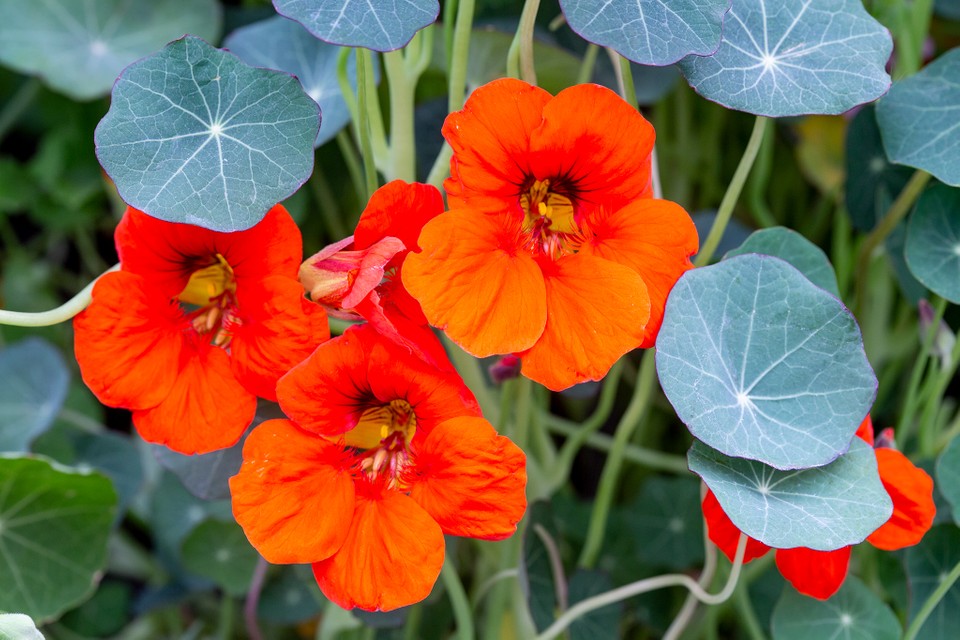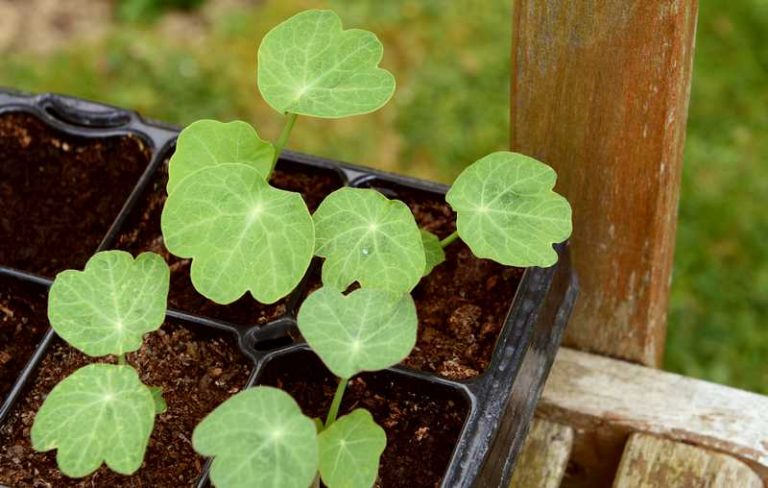Easy to sow and cultivate, nasturtiums offer simple but very colorful flowers. You can sow climbing nasturtiums to let them fall, run on stakes or on a fence, or sow dwarf nasturtiums , to be used in this case rather in planters, on the edge of beds or in the vegetable patch.
Do nasturtiums grow back every year?
Not directly because nasturtiums are annual plants: they die as soon as the first cold weather hits. But they reseed themselves the following year, provided they drop a few seeds on the ground in autumn. If the winter is mild, young nasturtium plants will appear naturally the following spring.
To be sure to see them grow back, you can also harvest the seeds of your dwarf or climbing nasturtiums in September. Let them dry for a few days flat in the sun or under a shelter if the weather is rainy. Then keep them all winter in a kraft paper bag or in an airtight box to resow them the following spring.

When to sow nasturtiums?
Nasturtiums are among the easiest flowering plants to grow and sow. Their sowing can therefore be carried out with children in order to begin to transmit to them the taste for gardening and nature.
You can sow nasturtiums between February and June at the same time as a sowing of marigold:
- Rather under cover and in buckets in cold regions from February to April
- Or with sowing in pockets directly in the ground in April, May and early June .
In regions with a mild climate in winter, without frost, you can sow your nasturtium seeds in the ground in the fall, but germination will only take place the following spring.
Under good conditions, the germination time for nasturtiums is 14 to 20 days.
Also count 1 to 2 months between the time of sowing and the appearance of the first flowers.

How to sow nasturtium seeds?
Choose a sunny location, nasturtiums need a warm and bright exposure to bloom generously. Even if they tolerate a temporary drought, they ideally appreciate a soil that is not too rich, but which remains cool all summer.
Soak the seeds to facilitate germination
Large seeds like those of nasturtiums are protected by a tough skin called the seed coat. So that the germ can pierce this envelope more easily, the trick is to soften it by soaking the nasturtium seeds in lukewarm water the day before sowing.
Sowing nasturtiums in pots
Sowing in pots is preferable in cold regions where risks of late frost remain possible in April-May.
- Use buckets with 8 cm sides, large seedling pots or even a planter. Fill each container with a mixture of equal parts good garden soil and horticultural soil.
- Place 3 seeds per cup, separated from each other. Press them down with your finger 3 cm deep.
- Do not forget to moisten the substrate.
- Then keep away from frost, under a window frame or behind the window of a garden shed. Watch the watering and place the young plants in the ground 30 cm apart in the second half of May, taking care not to break the clods.
Sowing nasturtiums in the ground
A few days before sowing your nasturtium seeds, prepare the soil by aerating it with the claw.
On the day of sowing, dig shallow holes with the trowel, spaced 20 to 30 cm apart.
To obtain a pretty bed of nasturtiums, sow in a pocket : place 2 or 3 seeds per hole . If one of the seeds does not germinate, the other 2 will. On the other hand, if the 3 nasturtium seeds germinate well, all you have to do is keep the most beautiful plant and collect the other 2 to replant them elsewhere in the garden or give them away.
Fill each hole with a mixture of garden soil and potting soil. Tamp well with your hand and water generously.

Caring for nasturtiums after sowing
Watering : Water regularly but not excessively to keep the soil cool
Flower cleaning : you can remove faded flowers to prolong flowering.
Aphids : Watch for aphid attacks; treat with black soap if their colonies are very numerous.
Stake : Install your climbing nasturtiums at the foot of a stake or a fence. At the beginning of the culture, it can be useful to guide them towards the support of trellising. Later, they roll up there alone.
The nasturtium: Beautiful, useful and good!
The nasturtium is the queen of beneficial associations in the vegetable garden :
- It attracts aphids. During this time, they will not colonize the beans or beans
- Its leaves attract the cabbage butterfly caterpillar : so much the better! It diverts them from your broccoli cabbage and cauliflower!
And everything is eaten in nasturtiums : leaves, flowers, buds and even the seeds are edible!
